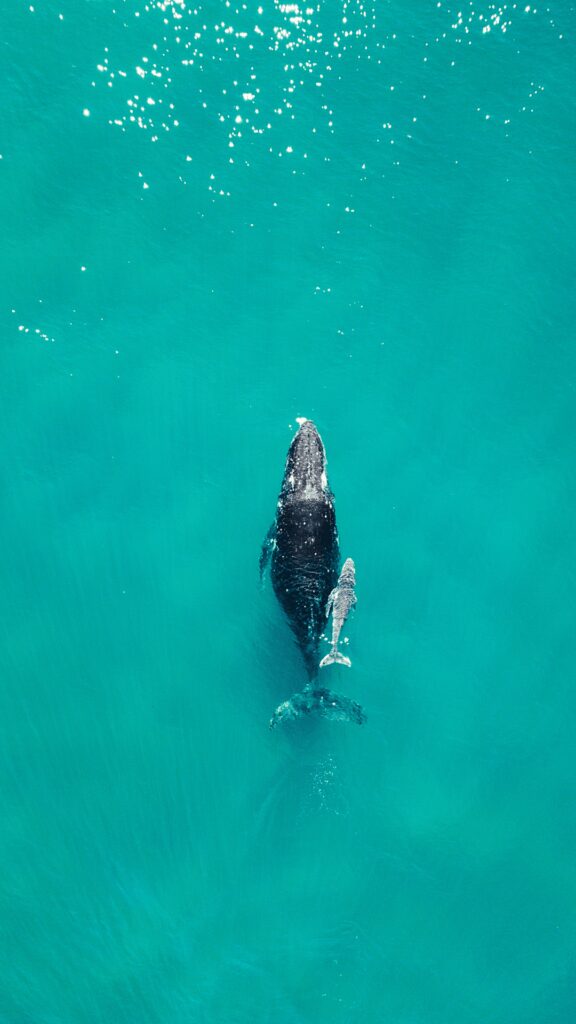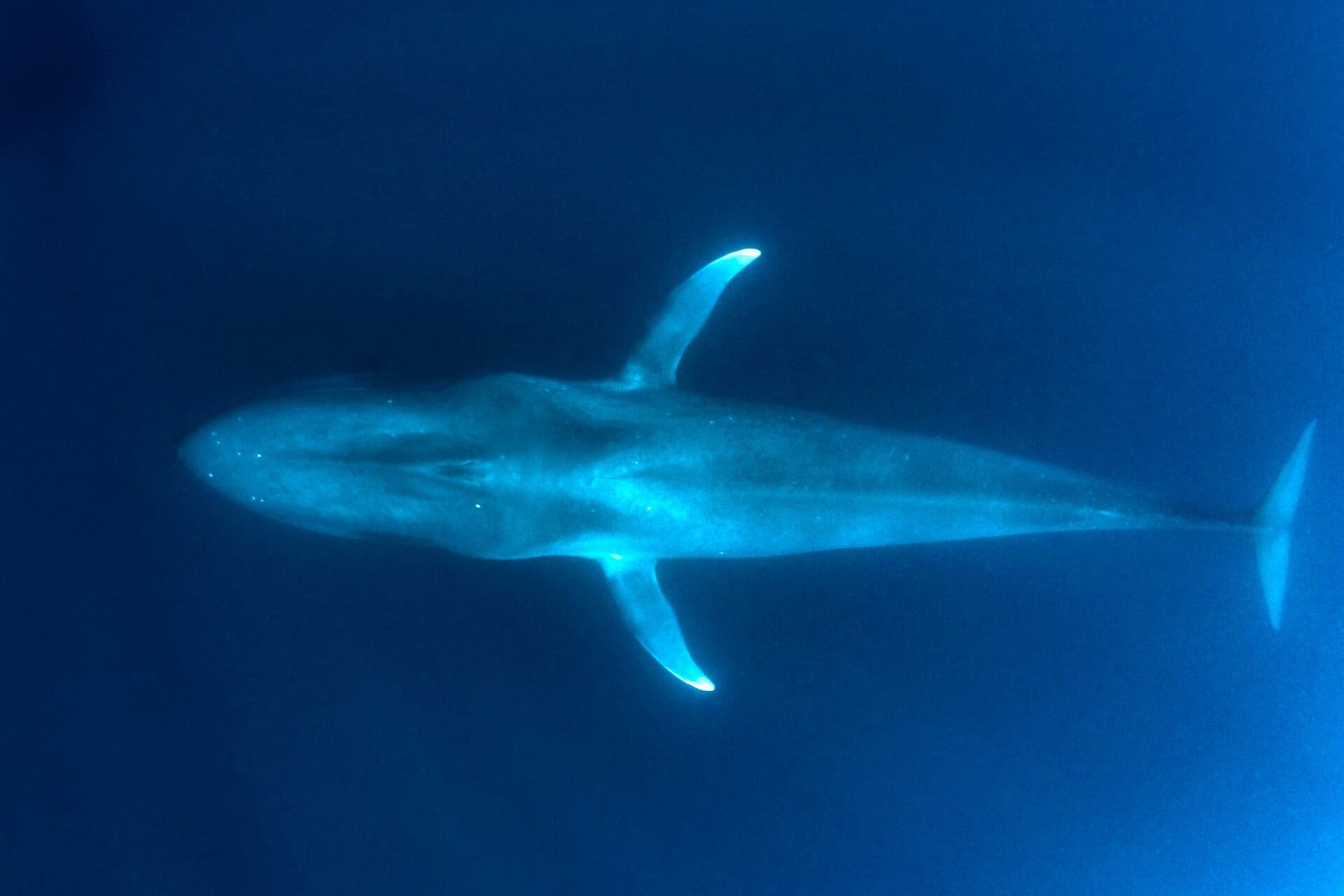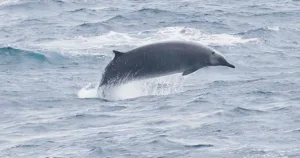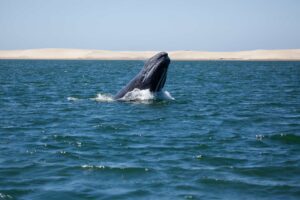Blue Whale: The Largest Animal on Earth
Blue whales are the largest animals on earth, and they are truly majestic creatures. Imagine seeing one of these enormous animals up close in their natural habitat. Whale watching is a once-in-a-lifetime experience you will never forget, and the blue whale is one of the most impressive species to observe.
What Makes Blue Whales Unique
Blue whales are found in oceans worldwide, and they are known for their distinctive blue-gray color and long, slender bodies. They can grow up to 100 feet long and weigh as much as 200 tons!
Blue whales, the largest animals ever known to have lived on Earth, are not just remarkable for their sheer size. These marine giants hold a special place in the natural world due to several unique characteristics:
- Astonishing Size: Blue whales can reach lengths of up to 100 feet (30 meters) and weigh as much as 200 tons. That’s about as long as a basketball court and as heavy as 33 elephants! Their heart alone can weigh as much as a small car, and their tongue can weigh as much as an elephant.
- Despite their size, blue whales are graceful swimmers, and they can reach speeds of up to 30 miles per hour when needed.
- Loud Vocalizations: Blue whales produce one of the loudest sounds in the animal kingdom. Their calls, which can reach 188 decibels, can be heard over hundreds of miles underwater and are used for communication and possibly for sonar navigation in the deep ocean.
- Gigantic Diet and Feeding Habits: Despite their enormous size, blue whales feed almost exclusively on tiny shrimp-like animals called krill. During feeding season, a single adult blue whale consumes about 4 tons of krill daily.
- Migratory Patterns: Blue whales are migratory animals, traveling long distances between their feeding grounds in cold waters and their breeding grounds in warmer waters. This migration is essential for their survival and reproduction.
- Endangered Status: Once abundant in nearly all the oceans on Earth, blue whales were hunted to extinction by whalers in the 20th century. They are now classified as endangered and are protected, but they still face threats from climate change, habitat loss, and ship strikes.
- Unique Coloration and Appearance: Despite their name, blue whales are not actually blue but appear so when underwater. Their skin is a mottled blue-gray color, and they have a long, slender body with a broad, flat head and a small dorsal fin.
- Breathing and Blowholes: Like all whales, blue whales breathe air and have a unique way of breathing through a blowhole on top of their head. When exhaling, they release a spectacular vertical blow, which can be up to 30 feet high.
- Longevity: Blue whales have a long lifespan, often living 80 to 90 years, with some individuals possibly living over 100 years.
- Solitary Nature: Unlike some other whale species that travel in pods, blue whales are typically found alone or with one other individual, reflecting their solitary nature.
- Role in the Ecosystem: As one of the largest creatures on the planet, blue whales play a crucial role in the marine ecosystem. Their presence affects the structure of the marine community, including influencing the population of krill and other small marine animals.
Why Blue Whale is called “Blue”?
Despite their name, Blue Whales are not entirely blue. They are actually a mottled blue-gray color with a lighter underside. When they are swimming in the water, the sunlight reflects off their skin, making them appear more blue than they actually are.
Blue Whales have a unique appearance: a small dorsal fin and a long, slender body. They also have baleen plates in their mouths, which they use to filter out tiny krill from the water.
Blue Whales are truly magnificent creatures that are worth seeing in person. If you’re interested in whale-watching, a trip to see these giants of the sea is an experience you’ll never forget!
Where to see a blue whale?
Seeing a blue whale, the largest animal on the planet, is a breathtaking experience. These magnificent creatures can be spotted in various parts of the world, depending on the time of year. Here are some of the best places to see blue whales:
- Monterey Bay, California, USA: Known for its rich marine life, Monterey Bay is a prime spot for blue whale watching, especially from July to October.
- Baja California Sur, Mexico: The waters off the coast of Baja California Sur are a haven for blue whales from January to March, offering a chance to see these giants in a spectacular setting.
- Sri Lanka: The waters around Sri Lanka are one of the best places in the world to see blue whales. The peak season is from December to April, especially around Mirissa and Trincomalee.
- Iceland: Blue whales are often seen between May and September in Iceland, particularly around Husavik and the Snaefellsnes Peninsula.
- Azores, Portugal: This group of islands in the North Atlantic is a hotspot for blue whales, particularly in the spring months from April to June.
- New Zealand: The waters around Kaikoura and the South Taranaki Bight are known for sightings of blue whales, particularly from June to August.
- Australia: The Perth Canyon off the coast of Western Australia is a lesser-known but emerging spot for blue whale watching, with the best chances from March to May.
- Chile: The Chiloé Island and the Gulf of Corcovado are good places to see blue whales in the Southern Hemisphere’s summer months.
- Antarctica: While a more remote and challenging destination, the Antarctic waters can provide sightings of blue whales during the Southern Hemisphere’s summer months (November to March).
| Country | City/Area | Best Time to See a Blue Whale |
|---|---|---|
| USA | Monterey Bay, California | July to October |
| Mexico | Baja California Sur | January to March |
| Sri Lanka | Mirissa, Trincomalee | December to April |
| Iceland | Husavik, Snaefellsnes | May to September |
| Portugal | Azores | April to June |
| New Zealand | Kaikoura, South Taranaki | June to August |
| Australia | Perth Canyon | March to May |
| Chile | Chiloé Island | Southern Hemisphere’s Summer |
| Antarctica | Antarctic Peninsula | November to March |
Life and Behavior in the Ocean Depths
Feeding and Diet
Imagine being the largest creature on Earth but dining on some of the tiniest creatures in the ocean. That’s the life of the majestic blue whale! These gentle giants, stretching up to 100 feet, have a surprisingly modest diet – they feast almost exclusively on krill, tiny shrimp-like organisms.
During the feeding frenzy in the bountiful waters of polar and subpolar regions, a single blue whale can consume an astonishing 4 tons of krill daily. Picture this: the blue whale, a marvel of nature, lunges forward in the water, its massive mouth agape, scooping up thousands of krill and gallons of water. Then, like a grand sieve, it uses its baleen plates to filter out the water, leaving behind a mouthful of krill. It’s a spectacular sight showcasing the whale’s unique adaptation to life in the ocean.
But here’s what adds to their charm – these colossal creatures, despite their size, are incredibly gentle. They roam the oceans in search of krill, playing a crucial role in maintaining the balance of the marine ecosystem. Their presence ensures the health of krill populations, which in turn supports a myriad of other marine life.
And when the seasons change, so does the life of a blue whale. They migrate to warmer waters, often fasting and relying on their fat reserves. This epic journey from feeding grounds to breeding areas is a testament to their resilience and the wonders of nature.
For those of us lucky enough to witness these magnificent creatures in their natural habitat, it’s not just a sight to behold; it’s an insight into the life of the ocean’s largest inhabitant. Their feeding, a dance of nature’s grandeur, is a spectacle that leaves onlookers in awe.
So, keep your eyes peeled for these gentle giants when you’re out there on the ocean. Watching a blue whale in its natural feeding ritual is not just a tick on your adventure list; it’s a moment that connects you to the wonders of the marine world. It’s an experience that stays with you, a story you’ll tell for years to come.
Migration Patterns
Blue whales are not just colossal in size; they are also long-distance champions. These gentle giants undertake extensive migrations between feeding and breeding grounds each year, a journey driven by the need to find abundant food sources and suitable conditions for raising their young.
Feeding Grounds: A Summer Feast
Blue whales are typically found in the cold, nutrient-rich waters of polar regions during the summer months. Here, they feast on krill, their primary food source. Places like the Antarctic and the Arctic become bustling hubs of activity, where blue whales gather in large numbers, turning the ocean into a grand dining room.
The Great Migration: Heading to Warmer Waters
As winter approaches and the days grow shorter, blue whales embark on an epic journey toward the equator. They travel to warmer, tropical waters, which offer ideal conditions for breeding and giving birth. This migration can be a journey of up to 10,000 miles, one of the longest of any mammal.
Breeding Grounds: A Safe Haven
The warm waters of regions like the Indian Ocean, the Pacific near Mexico, and parts of the Atlantic become the nurturing grounds for blue whales. Here, in the serenity of the tropics, they give birth to their calves, ensuring a safe and warm environment for the young to grow and gain strength for the journey back.
A Cycle of Life: The Return
After the breeding season, the whales return to their feeding grounds as the young calves become strong enough. This annual cycle is a rhythm that dictates the life of these magnificent creatures.
For Whale Watchers, understanding these migration patterns is like unlocking the schedule of nature’s grand show. Knowing where and when to find these majestic creatures can turn a simple whale-watching trip into a once-in-a-lifetime experience. From the icy waters of the Antarctic to the warm tropical seas, each location offers a unique glimpse into the life of the blue whale.
Exploring the Vocalization of Blue Whales

The Language of Giants
Blue whales, despite their enormous size, are not loud for the sake of being loud. Their vocalizations are a complex language, a tool for communication that serves various purposes. These sounds, which can be heard over vast distances, are essential for the survival of these gentle giants in the vast ocean.
Low-Frequency Rumbles: The Call of the Deep
The most striking feature of blue whale vocalizations is their low-frequency rumble, which can travel incredible distances underwater. Some of the deepest of any animal, these low-pitched sounds can be as low as 15 Hz, almost at the edge of human hearing. These calls are thought to be used for long-range communication, helping whales connect across the vast ocean.
The Language of Giants
Blue whales, despite their enormous size, are not loud for the sake of being loud. Their vocalizations are a complex language, a tool for communication that serves various purposes. These sounds, which can be heard over vast distances, are essential for the survival of these gentle giants in the vast ocean.
Low-Frequency Rumbles: The Call of the Deep
The most striking feature of blue whale vocalizations is their low-frequency rumble, which can travel incredible distances underwater. Some of the deepest of any animal, these low-pitched sounds can be as low as 15 Hz, almost at the edge of human hearing. These calls are thought to be used for long-range communication, helping whales connect across the vast ocean.
Songs of the Blue: A Mysterious Purpose
The songs of blue whales are not just random noises; they are structured and often repetitive. Scientists believe these songs play a role in mating, with males possibly using them to attract females or to assert dominance over other males. The exact purpose of these songs remains a mystery, adding to the allure of these magnificent creatures.
Scientific Classification and Subspecies
As a middle school student interested in whale-watching, you might be curious about the scientific classification of the blue whale. The scientific name of the blue whale is Balaenoptera musculus. It belongs to the family Balaenopteradae, which is a part of the order Cetacea. Cetacea is a group of marine mammals that includes whales, dolphins, and porpoises. Blue whales are a part of the suborder Mysticeti, also known as baleen whales.
There are five recognized subspecies of blue whales. These are B. m. musculus, B. m. intermedia, B. m. brevicauda, B. m. indica, and a possible fifth subspecies found in the waters off Chile. The different subspecies are distinguished by their geographic location and physical characteristics. For instance, the pygmy blue whale (B. m. brevicauda) is smaller than the other subspecies and is found in the Indian and South Pacific oceans.
Understanding the taxonomy and subspecies of the blue whale can help you appreciate the diversity of life in the ocean. When you go whale-watching, you might even be lucky enough to spot a blue whale or one of its subspecies in their natural habitat.
Conservation Status and Threats
Blue whales are the largest animals on Earth and are considered endangered. This means that their survival is at risk, and they need protection to prevent them from becoming extinct. There are many reasons why blue whales are endangered, including whaling, climate change, and fishing gear.
Impact of Whaling
Whaling is the hunting of whales for their meat, oil, and other products. Blue whales were hunted extensively during the 20th century, greatly reducing their population. The International Whaling Commission banned commercial whaling of blue whales in 1966, but the population has not fully recovered.
Current Threats
Blue whales face many threats today, including climate change, fishing gear, ships, entanglement, and collisions. Climate change is causing the ocean to warm, which is affecting the availability of the blue whale’s food. Fishing gear like nets and lines can entangle and kill blue whales. Ships can also collide with blue whales, which can cause serious injuries or death.
To help protect blue whales, the United States has laws such as the Endangered Species Act and the Marine Mammal Protection Act. These laws help to regulate human activities that may harm blue whales, such as fishing and shipping.
Protecting blue whales and their habitat is important to prevent them from becoming extinct. Seeing a blue whale in the wild is an unforgettable experience and can inspire people to take action to protect these magnificent creatures.
Conclusion
For those who dream of seeing the largest animal on Earth in its natural setting, a whale-watching tour offers an unforgettable experience. It’s an opportunity to witness the majesty of the blue whales up close, hear their songs, and feel the awe and respect these creatures inspire.
Remember that the story of the blue whale is one that continues to unfold. Each sighting, each song heard, and each breath taken at the ocean’s surface adds to our understanding and appreciation of these incredible beings. The blue whale’s journey through the vast oceans reminds us of the endless wonders that await us in the depths of the sea.
Embark on a whale-watching tour and be part of the ongoing story of the blue whale. It’s an experience that will leave a lasting impression, a memory that will echo like the whale’s song, deep and resonant, in your heart for years to come.
Additional Resources:
- International Whaling Commission (IWC): The IWC regulates whaling activities and promotes whale conservation. [1]
- Marine Protected Areas (MPAs): Establishing MPAs helps protect crucial whale feeding and breeding grounds. [2]







